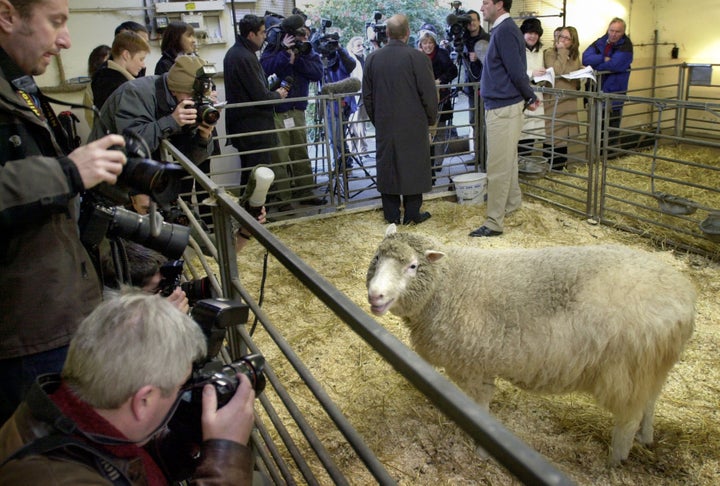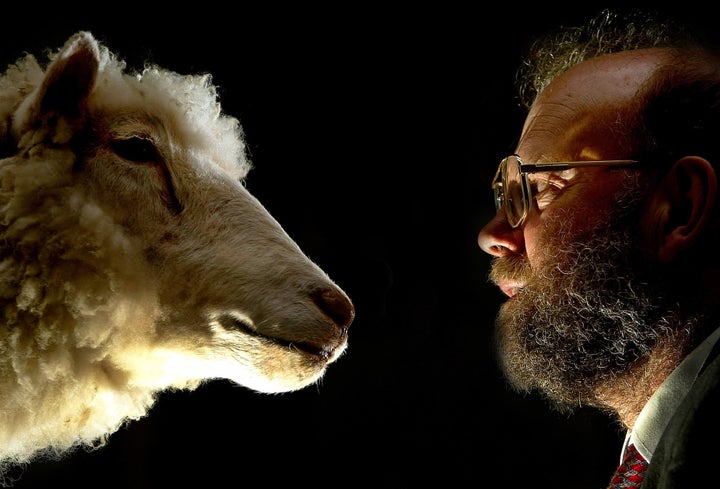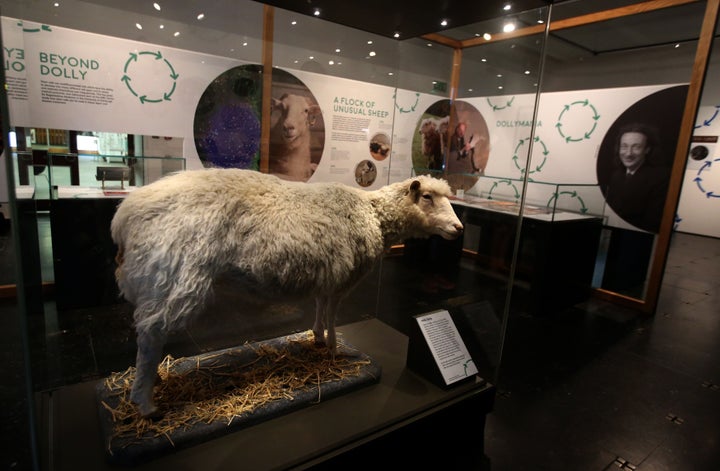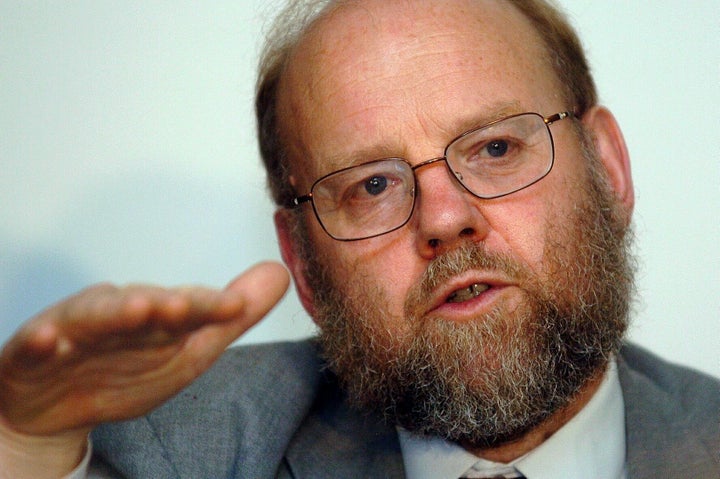
Dolly the Sheep helped pushed stem cell research forward by as much as 20 years, according to Professor Sir Ian Wilmut.
The prominent scientist was the leader of the research group that helped create the world's first mammal cloned from an adult cell.
He admitted that in the early days, scientists including himself had been carried away by the prospect of revolutionary stem cell therapies.
Speaking on the 20th anniversary of Dolly's creation, Professor Wilmut also controversially added that there should not be the introduction of a "red line" ban on research over ethical grounds.
It was his personal view that such “germ line” research either to defeat disease or provide broadly approved “enhancements” could be justified.

Dolly, who was born at the Roslin Institute in Edinburgh, on July 5 1996, made history by being the first mammal cloned from an adult cell.
Sir Ian said he had never hidden the fact that Dolly’s creation was largely a stroke of luck.
She was the only surviving lamb from 277 cloning attempts and was created from an udder cell taken from a six-year-old Finn Dorset sheep.
The pioneering technique the Roslin team used involved transferring the nucleus of an adult cell into an unfertilised egg cell whose own nucleus had been removed.
An electric shock stimulated the hybrid cell to begin dividing and generate an embryo which was then implanted into the womb of a surrogate mother. The result was a newborn animal that was a genetic copy of the original cell donor.
Dolly died on February 14 2003. She had suffered from arthritis and a virus-induced lung disease, and is thought to have aged prematurely due to being cloned from a sheep that was already six years old.

Despite sensational speculation about human cloning at the time of her birth, Dolly’s most important legacy was a massive boost to stem cell research.
The same cell reprogramming technique used to create Dolly was adopted by other scientists to generate “induced pluripotent stem cells” (iPS cells) from adult human skin cells.
Like stem cells plucked from early stage embryos, iPS cells have the potential to transform into any kind of tissue in the body, raising the possibility of ethically-approved stem cell therapies tailored to suit individual patients.
Sir Ian said: “The odds are that somebody would have come upon iPS cells through a different route, but that process, which is key to a lot of things, would have been delayed by an unknown number of years. It might have taken 20 years.”
He acknowledged that he and others in his field had been over enthusiastic and optimistic about developing radical stem cell treatments that can repair diseased organs and tissues.
In reality, the obstacles to overcome were so great that it might still be decades before stem cell therapies become routine.

“If you’re in research work you’re an optimist, you have to be,” said Sir Ian.
“Sometimes natural optimism makes us be too hopeful about what can be achieved. I think perhaps we are slowly learning to be more realistic and not make the same mistake again.”
Questioned by journalists at a special Dolly briefing in London, he was asked if patients should not get their hopes up. He replied: “I’m afraid so - it must be terrible.”
The idea of producing personally tailored treatments based on iPS cells created from cells donated by individual patients was unrealistic, he said.
But new research pioneered by Cambridge University scientists had raised the prospect of a “library” of cell types compatible with the immune systems of most members of the population.
Scientists had calculated that 150 cell lines could theoretically produce a match for 90% of people in the UK.
“In a few decades there might be a cell line that’s suitable for every person in the world,” said Sir Ian.
He had a controversially liberal view of modifying human DNA, even inherited “germ line” DNA in eggs and sperm.
Sir Ian said: “I think as a principle there shouldn’t be a simple red line that says ‘no we don’t’. The question is what’s the benefit, what’s the risk of mishap, and does the one thing justify the other.
“If there’s a procedure that would enable you to either correct a disease or enhance somebody in some way, and approved within a broad context, then I would be in favour of it.”
He thought scientists would have to be “very careful” not to overstep the mark and go down the route of altering human characteristics such as physical appearance or intelligence.
“I can’t imagine a time when that would be an appropriate thing to do,” said Sir Ian.